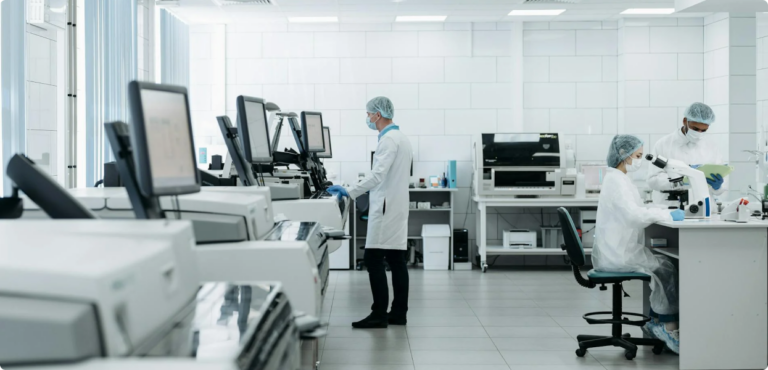As we step into 2024, the advancements in Artificial Intelligence (AI), particularly in Computer Vision (CV), are set to accelerate like never before.
Computer Vision, a subset of AI that’s been evolving since the 1960s, is now at the forefront of technological innovation. Originally developed to capture, analyze, and predict outcomes based on visual data, CV is now deeply integrated across a myriad of industries. From medical imaging and security surveillance to manufacturing quality control and autonomous vehicles, Computer Vision is becoming indispensable.
However, recent breakthroughs in AI models have initiated a fundamental shift in how we approach Computer Vision, especially with the adoption of deep learning architectures. These advances are transforming the landscape, allowing us to tackle complex challenges that traditional CV methods could never address.
2024 Prediction #1: Foundational Models Will Usher in Software 3.0
As we look to the future, one of the most significant developments will be the evolution of Foundational Models, which will pave the way for Software 3.0.
While Software 1.0 and 2.0 focused on “how to do it,” Software 3.0 will shift the focus to “what to do.” Foundational models, which have already made tremendous strides in Natural Language Processing (NLP), are poised to revolutionize AI’s problem-solving and decision-making capabilities. As these models evolve, we can expect AI to deliver more accurate predictions and more intelligent solutions across various industries.
Moreover, Software 3.0 will democratize software development, enabling more individuals to turn their ideas into viable applications. Much like the mobile app marketplace sparked an explosion of innovation, the advancement of Foundational Models will lower barriers to entry, empowering a broader range of people to create impactful business and consumer applications.
2024 Prediction #2: A Surge in Investment in Data Quality
In 2024, we will witness an intensified focus on data-centric approaches in AI. The quality of data used to train models will become even more crucial, driving organizations to invest heavily in tools that enhance data selection and curation.
For Computer Vision, which often deals with detecting anomalies or rare events in visual data, high-quality data is essential. Whether it’s identifying defects in a manufacturing process or spotting unusual objects in surveillance footage, the accuracy of CV models depends on the quality of the training data.
To address this, we can expect a rise in the use of advanced data augmentation tools, which will become integral in creating production-ready applications. These tools will enable the generation of high-quality synthetic data, ensuring that models are trained on the most relevant and diverse datasets.
2024 Prediction #3: The Shift from Parameter Growth to Model Efficiency
Another major trend in 2024 will be the shift in focus for Computer Vision models from increasing the number of parameters to enhancing model efficiency.
While Foundational Language Models (LLMs) have continued to grow in size, this approach is less practical for CV models, especially those deployed on edge devices. Unlike LLMs, which are often run on powerful central infrastructure, CV models frequently operate in constrained environments where size and efficiency are critical.
The challenge is particularly acute with video data, which requires real-time processing and is often too large to handle with bulky models. As we generate and capture more visual data daily, the emphasis will shift to optimizing CV models for performance and efficiency, making them more suitable for edge deployment.
2024 Prediction #4: Moving Beyond Human-in-the-Loop Annotation
The final prediction for 2024 is a move away from labor-intensive human-in-the-loop data annotation, towards the adoption of modern, AI-powered visual data preparation tools.
Data preparation remains one of the most challenging aspects of developing a successful Computer Vision algorithm. It’s a process that’s not only time-consuming and expensive but also prone to human error. As organizations scale, the traditional, manual approach to data collection, cleaning, and labeling becomes increasingly untenable.
Fortunately, advancements in AI are offering a way forward. New visual data tools are emerging that streamline the entire data preparation process—quickly and accurately curating, cleaning, and organizing data. These tools, coupled with improvements in visual data search, clustering, and model auditing, will significantly reduce the time and costs associated with data preparation, while also enhancing the overall quality and accuracy of AI models.
Looking Ahead to AI and Computer Vision in 2024
As we look forward to 2024, it’s clear that embracing the latest advancements in AI, particularly in LLMs and Computer Vision, will be crucial for companies aiming to stay competitive. Whether in medical imaging, manufacturing, or any other field, those who leverage these technologies will be better positioned to offer superior products and services.
However, as we advance, it’s equally important to prioritize the responsible and ethical use of AI. The true potential of these technologies can only be realized when they are used thoughtfully and with a commitment to positively impacting society and business.
Get ready for 2024—it’s shaping up to be a landmark year for AI and Computer Vision.




No Responses